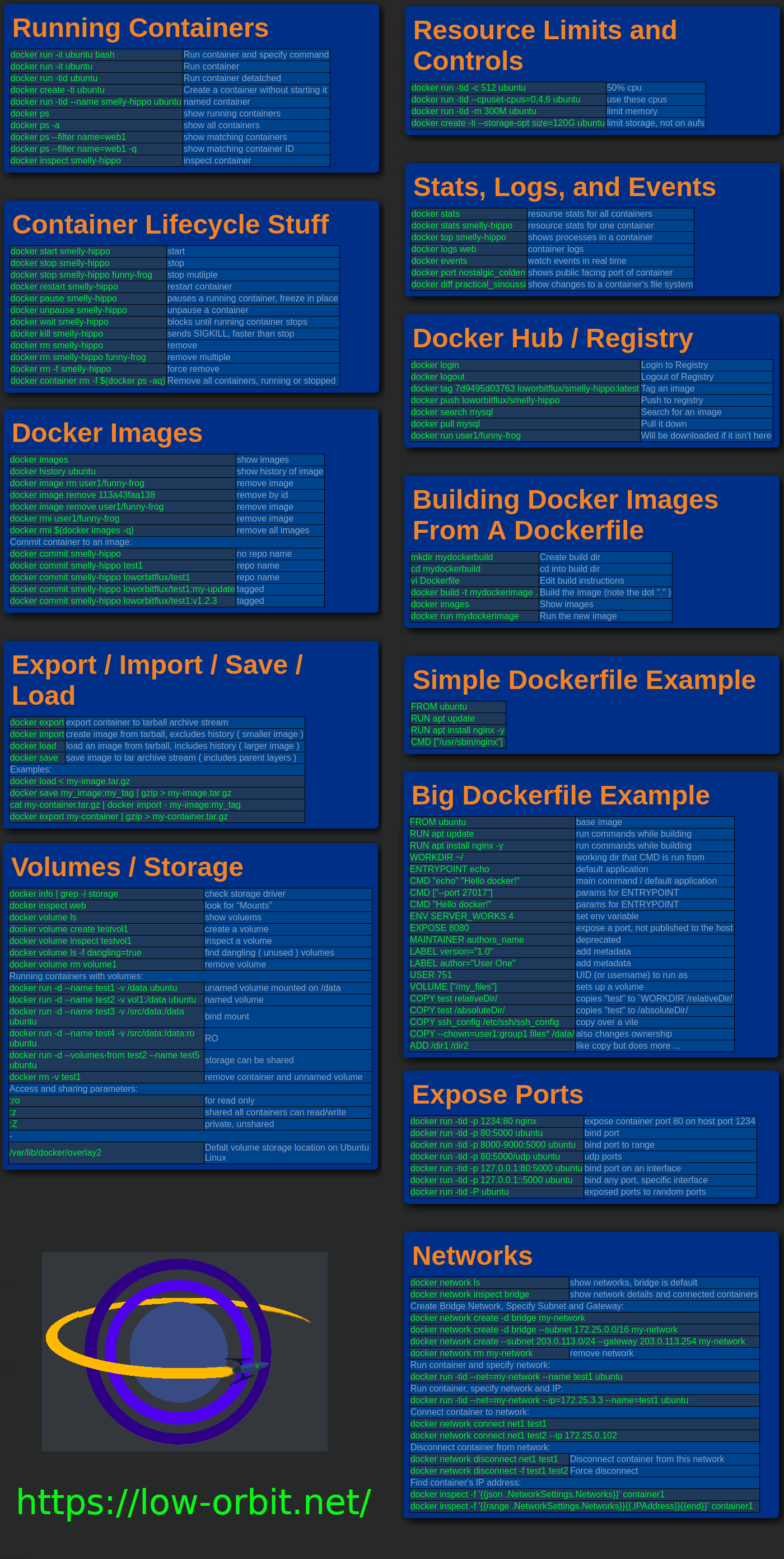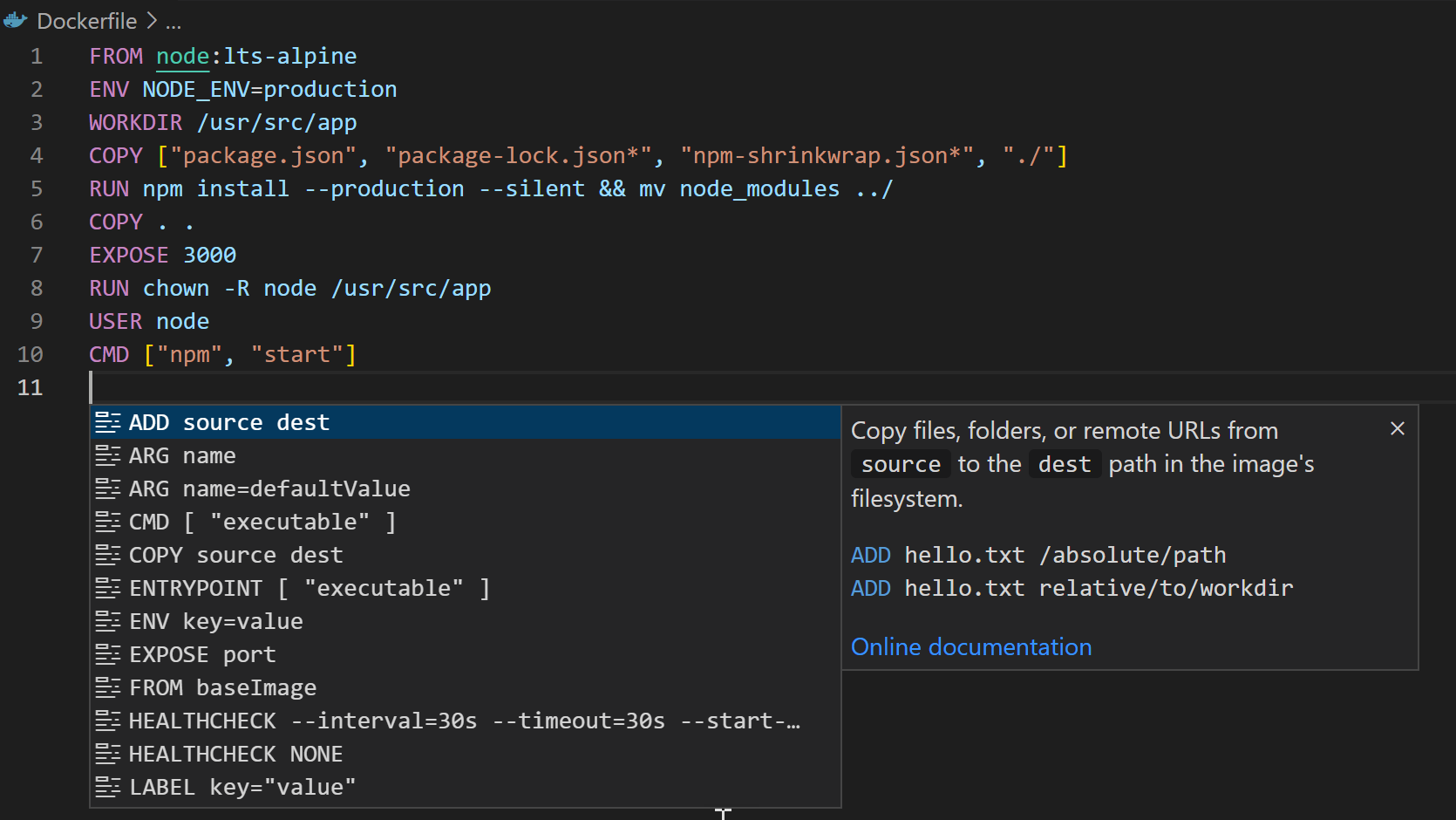The skeleton also provides a docker-compose.yml for use with docker-compose; it uses the Dockerfile provided as its base. Build and start the image using: Build and start the image using: $ docker-compose up -d -build.
- Install Ssh In Docker Container Design
- Install Ssh In Docker Container Centos
- Setup Ssh In Docker Container
- Install Ssh Into Docker Container
So, Docker can be a perfect candidate for web app development and testing on Raspberry Pi. Of course, you can do other things like running a web server, proxy server or a database server etc. On Docker on Raspberry Pi single board computer. In this article, I am going to show you how to install Docker on Raspbian OS that runs on Raspberry Pi. The latest release of the RHEL 8 / CentOS 8. Red Hat has built its own tools, buildah and podman, which aim to be compatible with existing docker images and work without relying on a daemon, allowing the creation of containers as normal users, without the need of special permissions (with some limitations: e.g. At the moment of writing, it's still not possible to map host ports to the. A docker container exits when its main process finishes. In this case it will exit when your start-all.sh script ends. I don't know enough about hadoop to tell you how to do it in this case, but you need to either leave something running in the foreground or use a process manager such as runit or supervisord to run the processes.
MVC Skeleton Application

If you want to use zend-mvc to build Model-View-Controller (MVC) applications, we recommend you start with our skeleton application.
Installation using Composer
The easiest way to create a new Zend Framework project is to use Composer. If you don't have it already installed, then please install it per their documentation.
To create your new Zend Framework project:
Once installed, you can test it out immediately using PHP's built-in web server:
This will start the PHP cli-server on port 8080, and bind it to all network interfaces.
Note: The built-in CLI server is for development only.
Using Vagrant
This skeleton includes a Vagrantfile based on Ubuntu 14.04, and using the ondrej/php PPA to provide PHP 7.0. Start it up using:
Once built, you can also run composer within the box. For example, the following will install dependencies:
While this will update them:
While running, Vagrant maps your host port 8080 to port 80 on the virtual machine; you can visit the site at http://localhost:8080/
Using docker-compose
The skeleton also provides a docker-compose.yml for use with docker-compose; it uses the Dockerfile provided as its base. Build and start the image using:
At this point, you can visit http://localhost:8080 to see the site running.
Install Ssh In Docker Container Design

You can also run composer from the image. The container environment is named 'zf', so you will pass that value to docker-compose run:
Gitea provides automatically updated Docker images within its Docker Hub organization. It ispossible to always use the latest stable tag or to use another service that handles updatingDocker images.
This reference setup guides users through the setup based on docker-compose, but the installationof docker-compose is out of scope of this documentation. To install docker-compose itself, followthe official install instructions.
Table of Contents
Basics
The most simple setup just creates a volume and a network and starts the gitea/gitea:latestimage as a service. Since there is no database available, one can be initialized using SQLite3.Create a directory like gitea and paste the following content into a file named docker-compose.yml.Note that the volume should be owned by the user/group with the UID/GID specified in the config file.If you don’t give the volume correct permissions, the container may not start.Also be aware that the tag :latest will install the current development version.For a stable release you can use :1 or specify a certain release like :1.13.3.
Ports
To bind the integrated openSSH daemon and the webserver on a different port, adjustthe port section. It’s common to just change the host port and keep the ports withinthe container like they are.
Databases
MySQL database
To start Gitea in combination with a MySQL database, apply these changes to thedocker-compose.yml file created above.
PostgreSQL database

To start Gitea in combination with a PostgreSQL database, apply these changes tothe docker-compose.yml file created above.
Named volumes
Install Ssh In Docker Container Centos
To use named volumes instead of host volumes, define and use the named volumewithin the docker-compose.yml configuration. This change will automaticallycreate the required volume. You don’t need to worry about permissions withnamed volumes; Docker will deal with that automatically.
MySQL or PostgreSQL containers will need to be created separately.
Startup
To start this setup based on docker-compose, execute docker-compose up -d,to launch Gitea in the background. Using docker-compose ps will show if Giteastarted properly. Logs can be viewed with docker-compose logs.
To shut down the setup, execute docker-compose down. This will stopand kill the containers. The volumes will still exist.
Notice: if using a non-3000 port on http, change app.ini to matchLOCAL_ROOT_URL = http://localhost:3000/.
Installation
After starting the Docker setup via docker-compose, Gitea should be available using afavorite browser to finalize the installation. Visit http://server-ip:3000 and follow theinstallation wizard. If the database was started with the docker-compose setup asdocumented above, please note that db must be used as the database hostname.
Environment variables
You can configure some of Gitea’s settings via environment variables:
(Default values are provided in bold)
APP_NAME: “Gitea: Git with a cup of tea”: Application name, used in the page title.RUN_MODE: prod: Application run mode, affects performance and debugging. Either “dev”, “prod” or “test”.DOMAIN: localhost: Domain name of this server, used for the displayed http clone URL in Gitea’s UI.SSH_DOMAIN: localhost: Domain name of this server, used for the displayed ssh clone URL in Gitea’s UI. If the install page is enabled, SSH Domain Server takes DOMAIN value in the form (which overwrite this setting on save).SSH_PORT: 22: SSH port displayed in clone URL.SSH_LISTEN_PORT: %(SSH_PORT)s: Port for the built-in SSH server.DISABLE_SSH: false: Disable SSH feature when it’s not available. If you want to disable SSH feature, you should set SSH port to0when installing Gitea.HTTP_PORT: 3000: HTTP listen port.ROOT_URL: ': Overwrite the automatically generated public URL. This is useful if the internal and the external URL don’t match (e.g. in Docker).LFS_START_SERVER: false: Enables git-lfs support.DB_TYPE: sqlite3: The database type in use [mysql, postgres, mssql, sqlite3].DB_HOST: localhost:3306: Database host address and port.DB_NAME: gitea: Database name.DB_USER: root: Database username.DB_PASSWD: '<empty>”: Database user password. Use `your password` for quoting if you use special characters in the password.INSTALL_LOCK: false: Disallow access to the install page.SECRET_KEY: ': Global secret key. This should be changed. If this has a value andINSTALL_LOCKis empty,INSTALL_LOCKwill automatically set totrue.DISABLE_REGISTRATION: false: Disable registration, after which only admin can create accounts for users.REQUIRE_SIGNIN_VIEW: false: Enable this to force users to log in to view any page.USER_UID: 1000: The UID (Unix user ID) of the user that runs Gitea within the container. Match this to the UID of the owner of the/datavolume if using host volumes (this is not necessary with named volumes).USER_GID: 1000: The GID (Unix group ID) of the user that runs Gitea within the container. Match this to the GID of the owner of the/datavolume if using host volumes (this is not necessary with named volumes).
Customization
Setup Ssh In Docker Container
Customization files described here shouldbe placed in /data/gitea directory. If using host volumes, it’s quite easy to access thesefiles; for named volumes, this is done through another container or by direct access at/var/lib/docker/volumes/gitea_gitea/_data. The configuration file will be saved at/data/gitea/conf/app.ini after the installation.
Upgrading
❗❗ Make sure you have volumed data to somewhere outside Docker container ❗❗
To upgrade your installation to the latest release:
Managing Deployments With Environment Variables
In addition to the environment variables above, any settings in app.ini can be set or overridden with an environment variable of the form: GITEA__SECTION_NAME__KEY_NAME. These settings are applied each time the docker container starts. Full information here.
These environment variables can be passed to the docker container in docker-compose.yml. The following example will enable an smtp mail server if the required env variables GITEA__mailer__FROM, GITEA__mailer__HOST, GITEA__mailer__PASSWD are set on the host or in a .env file in the same directory as docker-compose.yml:
To set required TOKEN and SECRET values, consider using gitea’s built-in generate utility functions.
SSH Container Passthrough
Since SSH is running inside the container, SSH needs to be passed through from the host to the container if SSH support is desired. One option would be to run the container SSH on a non-standard port (or moving the host port to a non-standard port). Another option which might be more straightforward is to forward SSH connections from the host to the container. This setup is explained in the following.
This guide assumes that you have created a user on the host called git which shares the same UID/ GID as the container values USER_UID/ USER_GID. These values can be set as environment variables in the docker-compose.yml:
Next mount /home/git/.ssh of the host into the container. Otherwise the SSH authentication cannot work inside the container.
Now a SSH key pair needs to be created on the host. This key pair will be used to authenticate the git user on the host to the container.
In the next step a file named /app/gitea/gitea (with executable permissions) needs to be created on the host. This file will issue the SSH forwarding from the host to the container. Add the following contents to /app/gitea/gitea:
To make the forwarding work, the SSH port of the container (22) needs to be mapped to the host port 2222 in docker-compose.yml . Since this port does not need to be exposed to the outside world, it can be mapped to the localhost of the host machine:
In addition, /home/git/.ssh/authorized_keys on the host needs to be modified. It needs to act in the same way as authorized_keys within the Gitea container. Therefore add the public key of the key you created above (“Gitea Host Key”) to ~/git/.ssh/authorized_keys.This can be done via echo '$(cat /home/git/.ssh/id_rsa.pub)' >> /home/git/.ssh/authorized_keys.Important: The pubkey from the git user needs to be added “as is” while all other pubkeys added via the Gitea web interface will be prefixed with command='/app [...].
Install Ssh Into Docker Container
The file should then look somewhat like
Here is a detailed explanation what is happening when a SSH request is made:
- A SSH request is made against the host (usually port 22) using the
gituser, e.g.git clone git@domain:user/repo.git. - In
/home/git/.ssh/authorized_keys, the command executes the/app/gitea/giteascript. /app/gitea/giteaforwards the SSH request to port 2222 which is mapped to the SSH port (22) of the container.- Due to the existence of the public key of the
gituser in/home/git/.ssh/authorized_keysthe authentication host → container succeeds and the SSH request get forwarded to Gitea running in the docker container.
If a new SSH key is added in the Gitea web interface, it will be appended to .ssh/authorized_keys in the same way as the already existing key.

Notes
SSH container passthrough will work only if
opensshdis used in the container- if
AuthorizedKeysCommandis not used in combination withSSH_CREATE_AUTHORIZED_KEYS_FILE=falseto disable authorized files key generation LOCAL_ROOT_URLis not changed
